Table of Contents
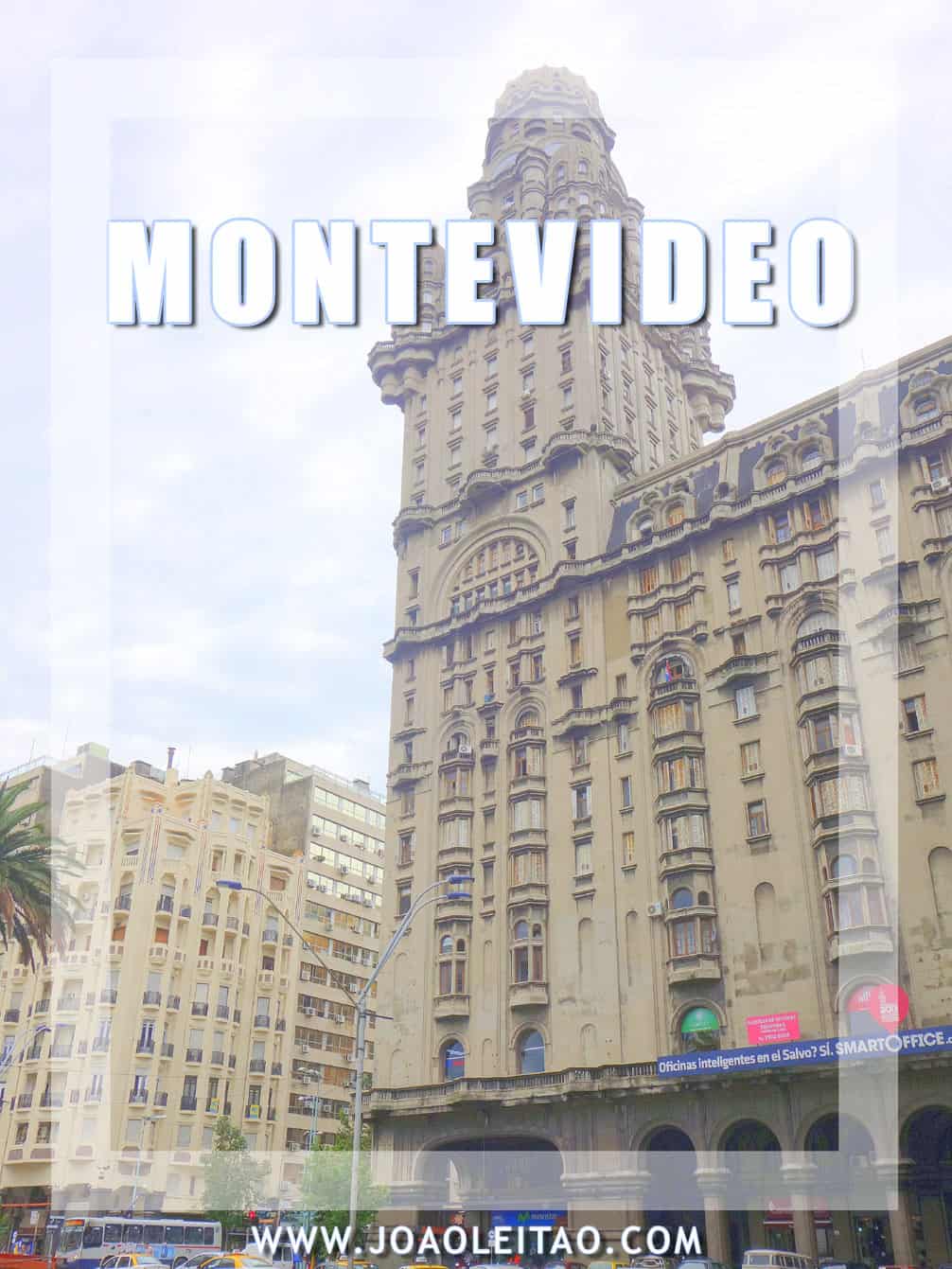
Montevideo is the capital of Uruguay, in the south of the country, built on the shores of the Plata River, and famous for being quite a cozy and safe city, with excellent quality of life.
Montevideo name comes from an entry on Ferdinand Magellan’s journal in 1520 at the age of discoveries. He wrote down “Monte vide eu” (“I saw a mount”) when referring to the mount in Montevideo. But, although there aren’t any records of this, other sources suggest the name might be an acronym for “Monte VI De Este a Oeste” (“I saw a mount from east to west”). You can’t visit Uruguay and not spend some time in Montevideo. Otherwise, you’ll be missing out on a fascinating destination.
Almost half the population of Uruguay lives in the capital Montevideo. Its historic center dates back to 1724 when the city was founded. In the mid-19th century, the city grew towards the east and an area now known as the Centro was born. Suburbs appeared and later became part of the ever-growing city that now stretches for 20 km in total, organized in different districts.
Historically, Montevideo is a multicultural city, the result of continuous waves of immigration, and that comes through in the local culture and cuisine. It might not be as large or as historically rich as other South-American capitals, but it has enough to keep the tourists busy for some time.
In the center of Montevideo, classic Art Deco and Neoclassical buildings mix with relatively modern towers that have seen better days. But when walking towards the northeast, you’ll enter a completely different world, with modern shopping malls and communities that remind us of the beach areas of Miami or Rio de Janeiro.
Montevideo gained city status in 1726 and was very disputed between Portuguese, Spanish, and English. Conquered by the Portuguese in 1817, it became the capital city of the Cisplatina Province of the United Kingdom of Portugal, Brazil, and the Algarves in 1821. It became independent in 1828, as the capital city of Uruguay. Montevideo is a tourist city, where tourism is the primary source of income.
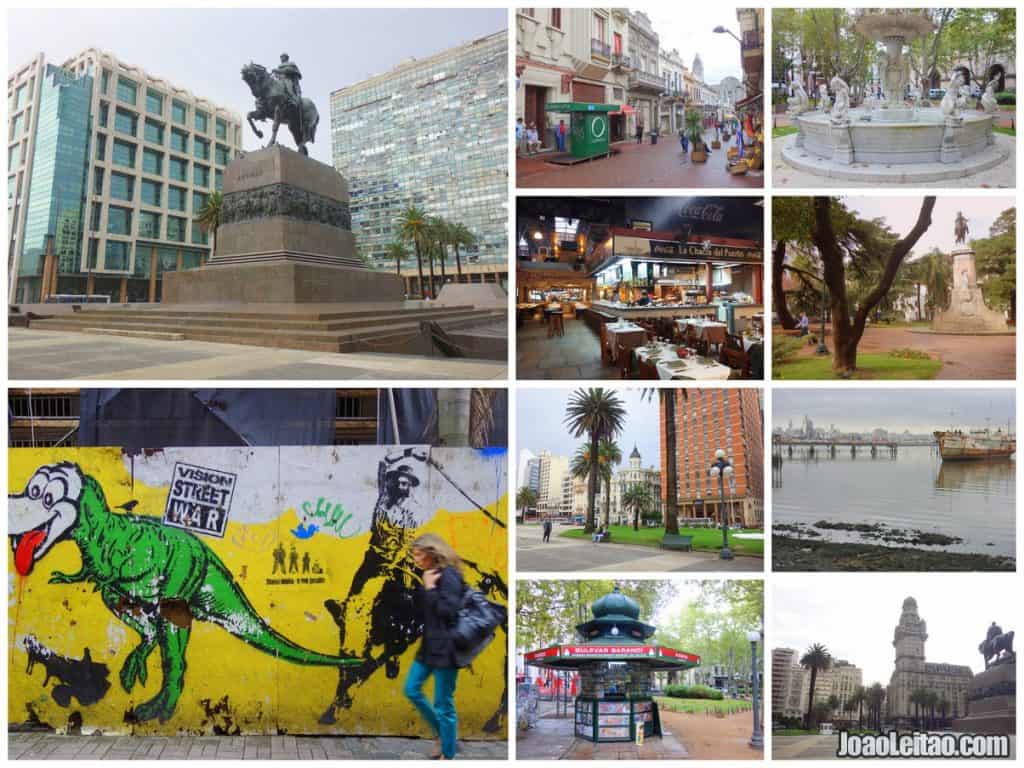
Quick travel tips to visit Montevideo:
- Wake up early and be the first at monuments, museums, and other landmarks
- Go up to Fortaleza del Cerro for the best view of the city
- Go on a free walking tour
- Take care of your belongings
- Although it’s a very cliché and touristy thing to do, eat at Mercado del Puerto (Port Market)
- To know when to go to Montevideo, gather all information about the local climate and the seasons. The best time to visit Montevideo is in the summer, between December and March, although spring, from September to November, is also pleasant.
- Visit the country’s most famous square, Independence Square, that still has a gate that belonged to the old wall;
- Plaza Independencia (Independence Square) is the center of Montevideo. To reach there, or any of the suggested accommodations, from the bus station you can catch a taxi (about UYU 150 / 5 Eur), a city bus (UYU 28 / 1 Eur), or walk. It’s about 3.5 km away.
- At Independence Square you can visit Salvo Palace, definitely the most famous building in Montevideo and that, surprisingly, was once the tallest in Latin America.
- You’ll enter the old city through the Puerta de la Ciudadela (Old Town Gate).
- You might want to visit the Legislative Palace and the Cementerio Central (Central Cemetery). You can walk to both sites.
- The well-preserved Solís Theater is right next to Independence Square, where you can go on guided tours to know more about the building’s history and its halls or attend some artistic performances;
- Walking or riding a bicycle on the Rambla of Montevideo is a pleasant activity, especially when the sun is setting at the Plata River.
- If you don’t mind sleeping in a dorm, Caballo Loco Hostel is a great option. It’s not cheap, but the location and quality are worth it. If you value your privacy, I suggest Chez Mario et Solange. It has excellent ratings and is located in the best area of the city.
- If you’d like to see some museums, visit the Museum of National History scattered through four historical houses in the city, all of them with free entrance.
- Across the bay, a bit further from the center, you can visit the fortress Fortaleza General Artigas, also known as Fortaleza del Cerro, Montevideo’s historical center with excellent views over the whole city.
- The Pocitos neighborhood, cosmopolitan and with a long beach, has a pleasant vibe and it’s very safe. It’s also a great starting point for a walk on the Rambla, the seaside promenade that’s a locals’ favorite and always vibrant.
- After a few days in Montevideo, you’ll want to visit Buenos Aires but before that take a trip to Colonia Sacramento. This small city is a must-see not only for its atmosphere but because it was founded by Portuguese, which is rare in Spanish-speaking America.
- There are bus connections from Montevideo to Colonia that depart every hour from bus terminal Tres Cruces. The trip is about three hours and costs around UYU 345 / 11.60 EUR.
Montevideo Top 5
Plaza Independencia
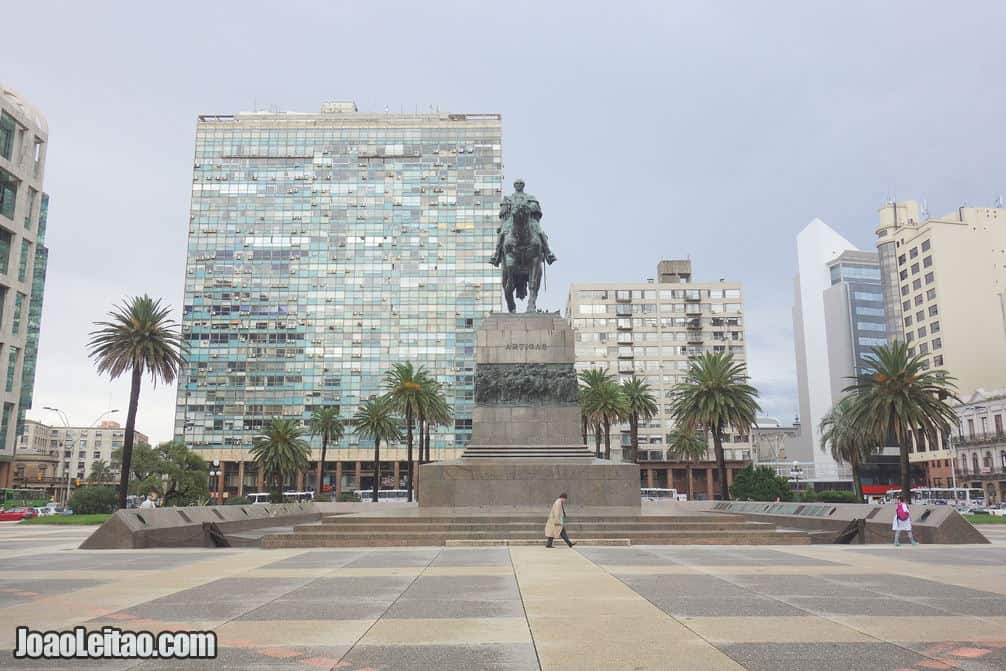
Montevideo Fortress
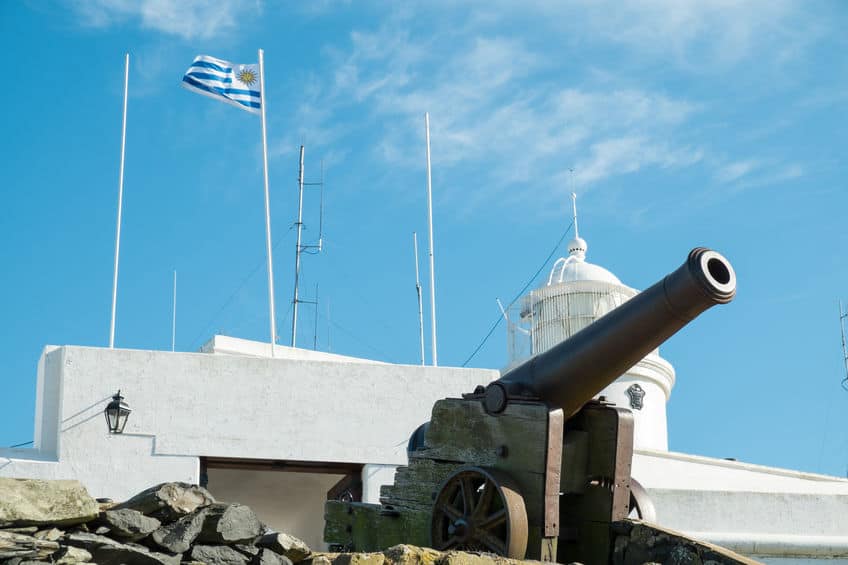
Montevideo Legislative Palace
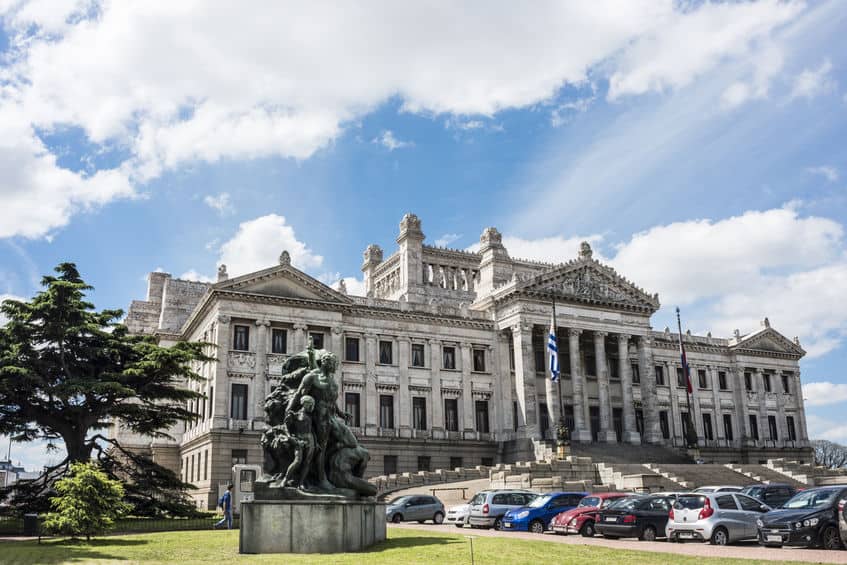
Puerta de la Ciudadela
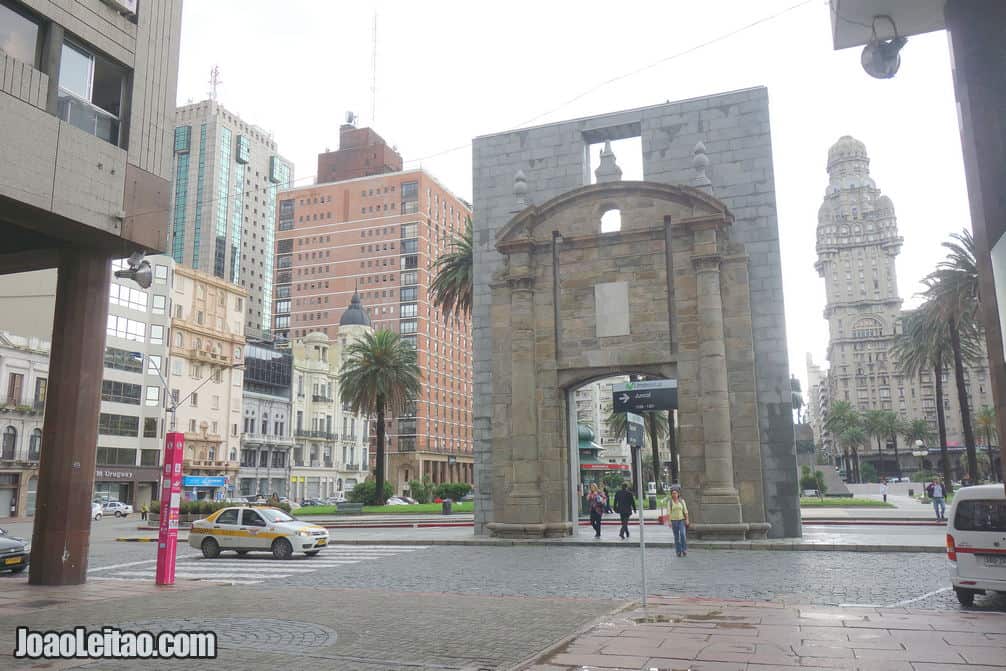
Mercado del Puerto
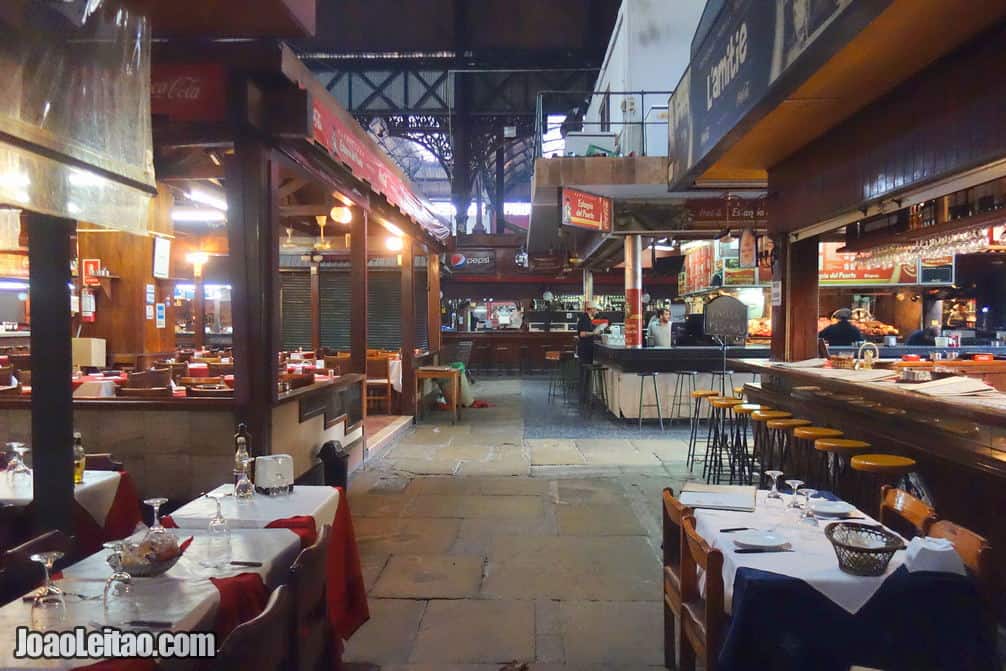
What to visit in Montevideo
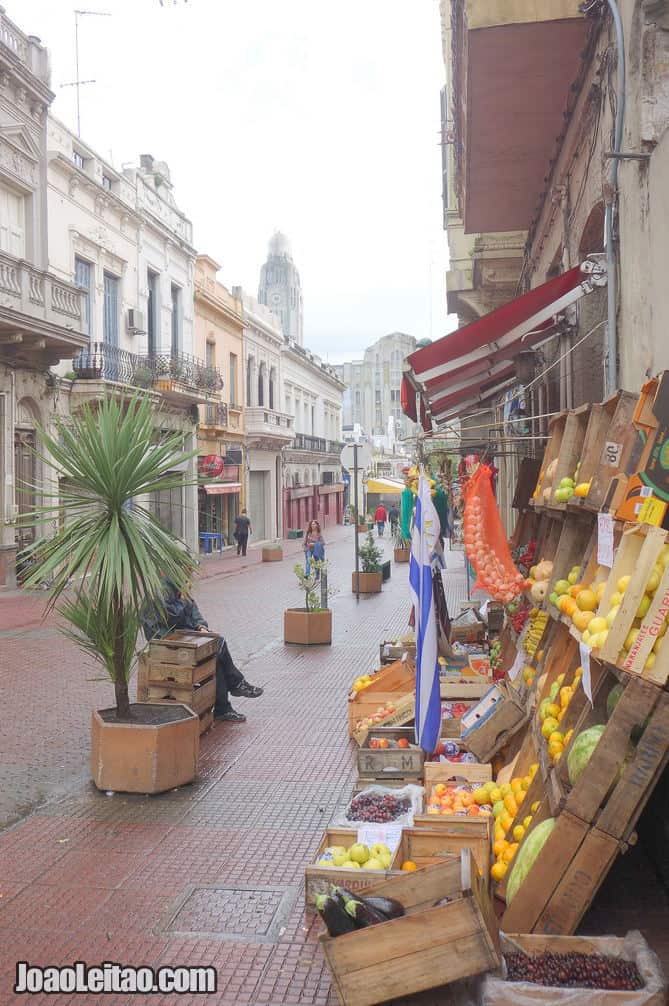
Most famous sites
- Plaza Independencia
- Fortaleza del Cerro
- Legislative Palace
- Constitution Square
- Puerta de la Ciudadela
- Mercado del Puerto
- Montevideo Cathedral
- Solís Theater
- Pocitos Beach
- Palacio Salvo
- Lock Fountain
- Mirador De La Intendencia
- Obelisk of Montevideo
- Peatonal Sarandí Street
- Artigas Mausoleum
- Palacio Taranco
- Torres García Museum
- Palacio Estévez
Map of Attractions
Tours in Montevideo
Montevideo City Guide
Plaza Independencia (Independence Square)

The Independence Square marks the connection between the historic center of Montevideo and its functional center. It was established in 1836 when the old fortresses on the site were destroyed. At Independence Square, you’ll find some of the most iconic elements of the Uruguayan capital such as the Salvo Palace and the monument to General José Artigas, whose remains rest in the mausoleum under the equestrian statue. There you’ll also see the Solís Theater, the Estévez Palace, and the Torre Ejecutiva, a modern presidential palace that you can partially visit. Cars aren’t allowed at Ciudad Vieja (Old Town), where you enter through Puerta de la Ciudadela (Old Town Gate), so Independence Square is the historic center’s connection to the rest of the city, with lots of people and buses.
Fortaleza del Cerro

Fortaleza del Cerro, also known as Fortaleza General José Artigas, is a fortress at the Casabó neighborhood, west of Villa del Cerro, with an amazing view of the old city and the Montevideo Bay. It was built between 1809 and 1811 to protect the city from the English menace, and was the setting for battles during the Independence War and the internal conflicts that followed. From then onwards, the fortress only shoots a salute when important ships enter Montevideo. It was restored between 1931 and 1939 and now houses the José Artigas Museum, open Wednesday to Sunday.
Solís Theater
The most important theater of Uruguay is at Independence Square between the old city and the city’s functional center. A first draft of the theater was designed by Italian architect Carlo Zucchi and that was the base for Francisco Xavier Garmendia to bring the building to life. It was inaugurated on 25 August 1856 in the presence of the President of the Republic, Gabriel Antonio Pereira, and the opera Ernani by Verdi was performed on the opening night. Surprisingly, the inauguration happened before the theater was finished and the side wings weren’t completed before 1874. In the following years, the theater was improved and expanded, but the Italian influence remained. The Neo-Classical façade seems to be based on the concept used on the Carlo Felice Theater in Genoa and the concert hall is very similar to the one at the La Scala in Milan.
Montevideo Metropolitan Cathedral
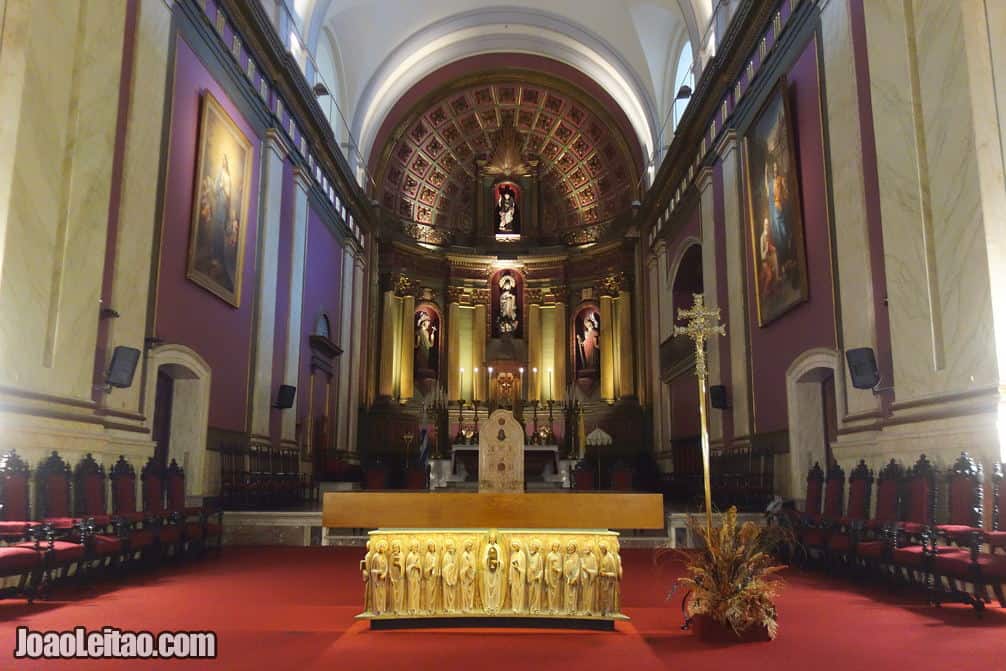
This church, the main church in Montevideo and Uruguay, is near the Constitution Square. It’s relatively new, built on the site where there once was the Mother Church, initially constructed in 1720 and partially destroyed in 1788. There are no records of the construction process of the new church, but it was most likely designed by Portuguese military engineer José Custódio de Sá e Faria. It was inaugurated in 1804 before it was complete. From that moment onward, it withstood bizarre events starting with being shot in 1807 by English ships entering the Plata River. The two towers were finished in 1818 and the church was renovated in 1858 by architect Bernardo Poncini. The church is linked to some great moments in the national History, as this was the place where the first flag of Uruguay was blessed and the first Constitution was made official.
Palacio Estévez (Estévez Palace)
In 1873, Francisco Candelario Estévez bought the land where you can now see the palace finished in 1874. The owner lived there and leased part of his property to the Consulate of Italy. Four years later, the palace became the property of Bank of London y Río de la Plata and after that of the state. President Lorenzo Latorre decided to turn the palace into the Seat of Government, where it remained until 1985. Soon after that, the palace was remodeled by architect Enrique Benech and artist Manuel Espínola Gómez, and since 1999 it houses the Museo de la Casa de Gobierno (Museum of the House of Government). In 2009, it officially changed its name to José Artigas Building.
Palacio Salvo
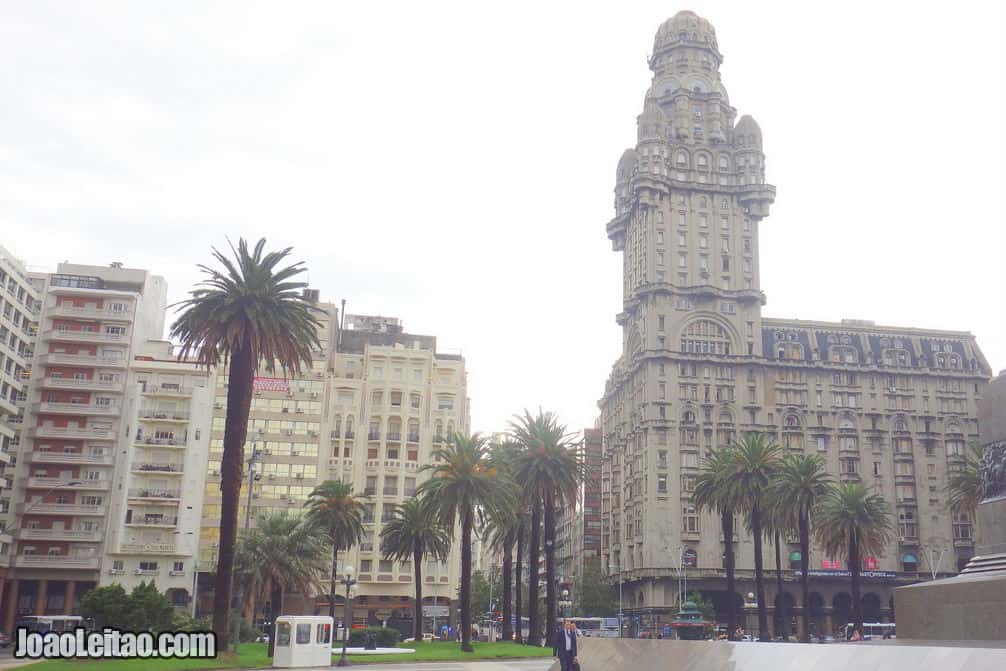
Salvo Palace was built in 1928 and was at that time the tallest building in South America with 95 meters in height. It was designed by Italian architect Mario Palanti, as its twin building Palacio Barolo in Buenos Aires was. Gothic is the main style of architecture with some Neo-Romantic and Classical details. When it was built, it included a lighthouse at the top as a way to impress visitors arriving in Montevideo by boat. Some fun facts about the building: it was meant to be a luxury hotel, but it never happened; it includes a music studio worth several millions of dollars and a radio station. Unfortunately, the building is slightly neglected.
Mercado del Puerto (Port Market)

Mercado del Puerto (Port Market) was once a market, in the traditional sense, but now it’s something different, frequently described as a cultural and gastronomical journey. The building was inaugurated in 1868 by the Spanish Pedro Sáenz de Zumarán and a group of local investors. The style was markedly British and it was built by the Union Foundry, a company in Liverpool. Nowadays it’s a gathering place, especially on Saturdays, when the market hosts several artistic activities and music concerts. For meat lovers, this is a mandatory stop as one of the best places to try the famous Uruguayan steaks.
Peatonal Sarandí Street
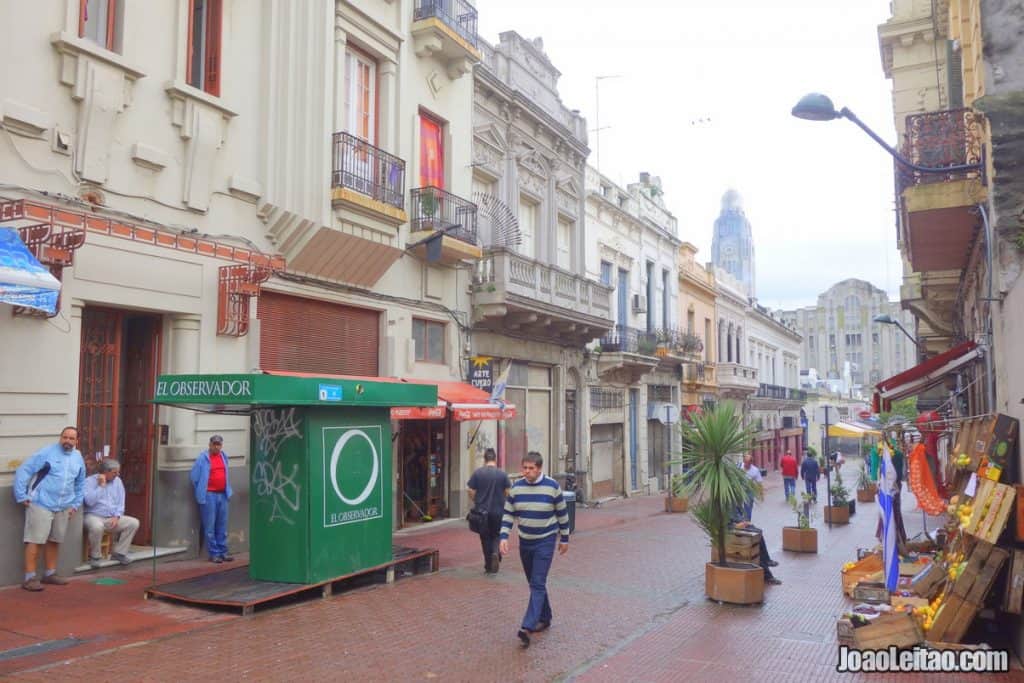
This is the most important street in Ciudad Vieja (Old Town). It begins at the old town, crosses the Constitution Square (Plaza Constitución), and stretches all the way to the Rambla, the seaside avenue. A walk on this street usually ends at the Montevideo port pier, known as Escollera Sarandí. Iconic historical buildings alongside this street include the Pablo Fernando Building, Plaza Fuerte Hotel, Torres Garcia Museum, Montevideo Metropolitan Cathedral, Libreria Más Puro Verso, and Cabildo. Cars aren’t allowed here since 1922 and the street has deep historical roots. It was designed in 1726 by Pedro Millán, who was inspired by the city planning that was trending in France at the time. There are plenty of art galleries around and this is a popular spot for street artists in Montevideo.
Artigas Mausoleum
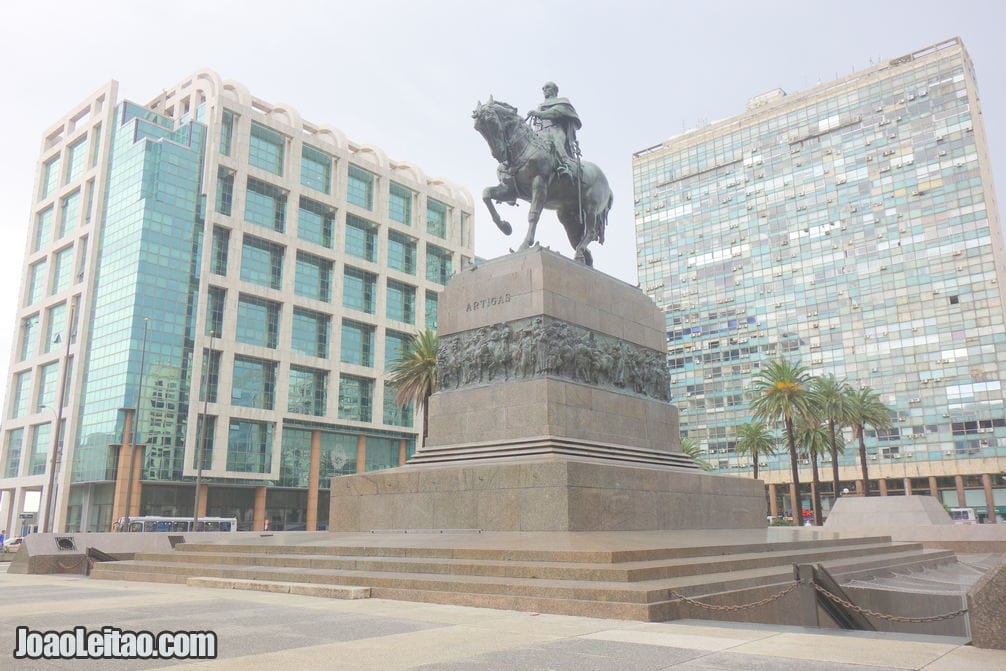
You’ll notice an equestrian statue at the center of Independence Square that’s actually the mausoleum of General José Gervasio Artigas (1764-1860), the father of the Uruguayan nation, and a prominent figure of the independence war and the strengthening of the national sovereignty. The monument and the mausoleum were built in the 1930s and the national hero’s remains were transferred there. The Artigas Mausoleum is under the statue and is permanently secured by two guards of a traditional branch called Blandegues de Artigas. You can visit the mausoleum on Mondays from noon to 6:00 pm, and from Tuesdays to Sundays from 10:00 am to 6:00 pm.
Torres García Museum
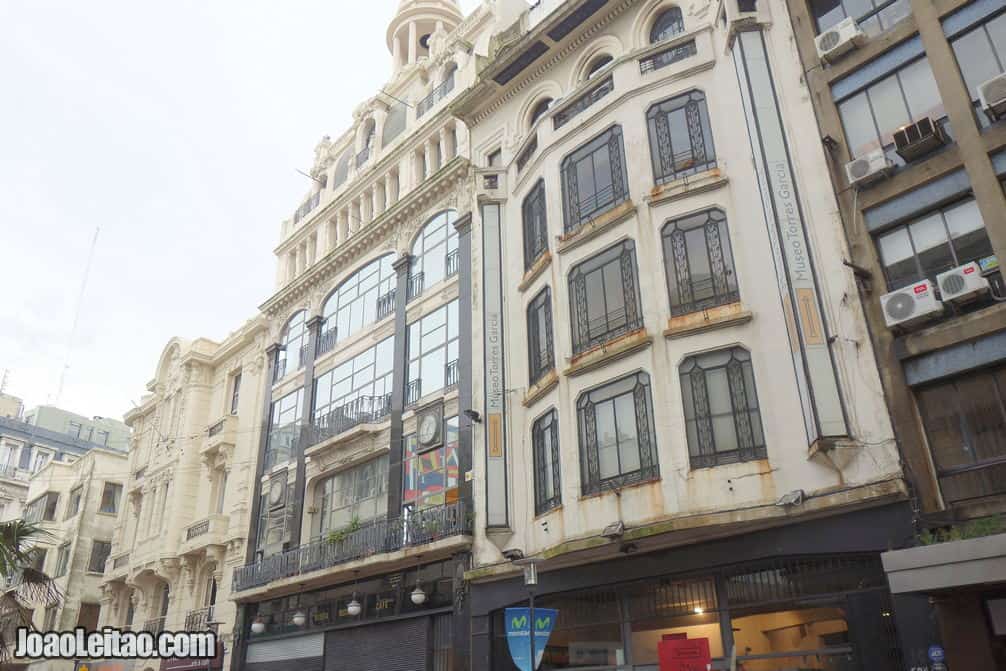
Although the museum was created in 1949, shortly after the passing of artist Torres Garcia, it’s only been at the current site since 1991. The idea for the museum came from the late artist’s family, driven by his widow Manolita Piña, to group Torres Garcia’s artistic and document legacy. It opened to the public in 1955, changed locations several times, and was permanently closed in 1973 during the dictatorship. After that period, a foundation was created to manage the museum and which established an important protocol with the Ministry of Culture. Today the museum is at the Old Town and showcases the work of Torres Garcia and some temporary exhibitions. It also includes a library, an area for shows and events, and several areas dedicated to workshops and other educational and cultural activities.


